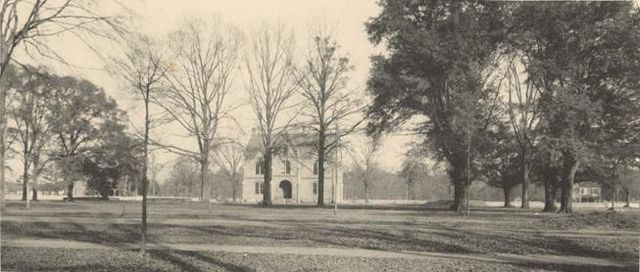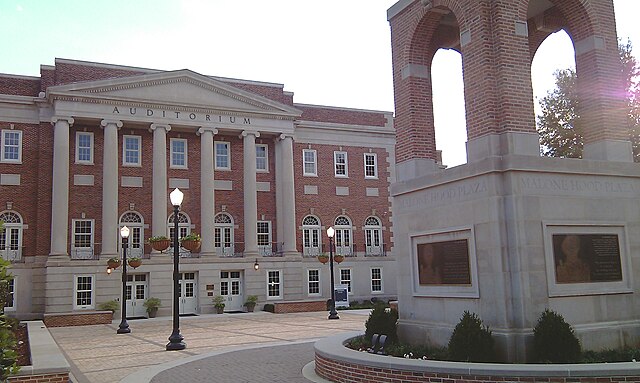Gorgas–Manly Historic District
The Gorgas–Manly Historic District is a historic district that includes 12 acres (4.9 ha) and eight buildings on the campus of the University of Alabama in Tuscaloosa, Alabama. The buildings represent the university campus as it existed from the establishment of the institution through to the late 19th century. Two buildings included in the district, Gorgas House and the Little Round House, are among only seven structures to have survived the burning of the campus by the Union Army, under the command of Brigadier General John T. Croxton, on April 4, 1865. The other survivors were the President's Mansion and the Old Observatory, plus a few faculty residences.
Clark Hall, completed in 1884.
Gorgas House, completed in 1829. The portico was added in 1853 and expanded to its current width in 1896.
Little Round House, completed in 1860.
Woods Hall, completed in 1868.
The University of Alabama is a public research university in Tuscaloosa, Alabama. Established in 1820 and opened to students in 1831, the University of Alabama is the oldest and largest of the public universities in Alabama as well as the University of Alabama System. It is classified among "R1: Doctoral Universities – Very high research activity".
View of the Quad in 1859. The Rotunda can be seen at center, with the halls visible in the background. All buildings depicted were destroyed on April 4, 1865.
A view of either Tuomey Hall or Oliver-Barnard Hall, one of the first buildings constructed after the university reopened after the Civil War, in 1907
George Wallace's "stand in the schoolhouse door" to attempt to stop integration of other races at the University of Alabama.
Foster Auditorium and Malone-Hood Plaza today. Lucy Clock Tower is in the foreground.








